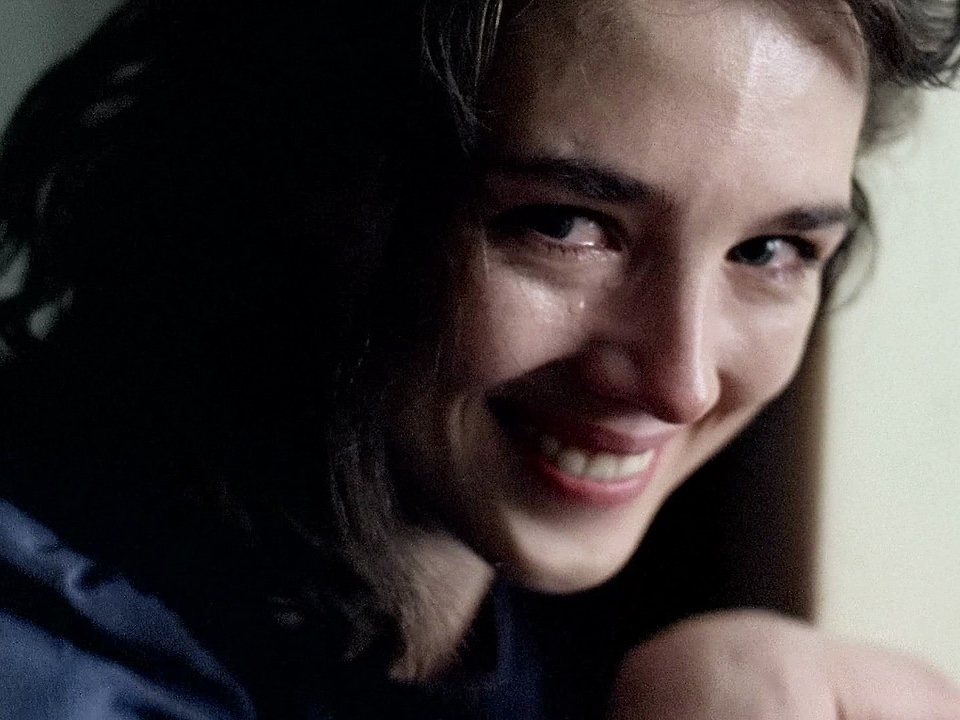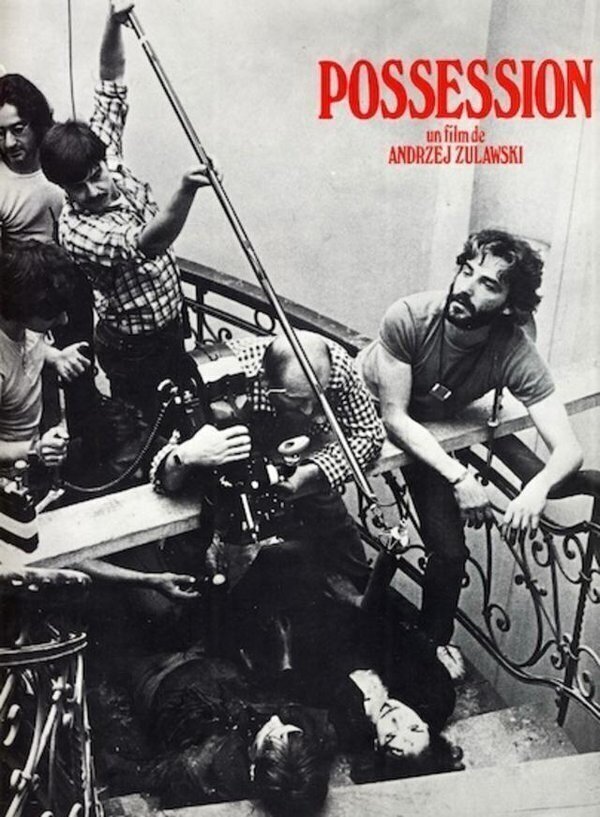
A woman starts exhibiting increasingly disturbing behavior after asking her husband for a divorce. Suspicions of infidelity soon give way to something much more sinister.
EN
“I guess when you’re there you want to be home, and when you’re home you want to be there.”
Mark
“The first text we see in the film – its first explicit message – is a fleetingly-seen but distinct-enough graffito: DIE MAUER MUß WEG. The Wall Must Go. There are, in fact, two homes within the cement snake’s grip. Anna and Mark live in a Neubau apartment on Bernauer Strasse, which looks over the concrete barricade into East Berlin: behind the guards that gaze up at the couple through binoculars, we see the crumbling ruins of apartments, boarded and bricked up in the 1960s to prevent citizens from defecting from their own windows. (...)
Żuławski's compositional design is as immaculate as his inter-scene planning. On the one hand, we have Neill swaying violently back and forth on a rocking chair, his knees bobbing up into frame as his head nearly disappears out of it. On the other, we cut from an image of Neill pivoting on a swivel chair to an apartment door being vigorously swung open. If this is a horror, it’s one whose energies are formed around kinesis rather than the suggestion of dormant dread. When they can’t speak, Żuławski's characters suffer intense seizures.
Movement, stasis. The film’s tensions (dramatic, emotional, aesthetic) all seem rooted to the liminal geographies of West Berlin – to urban pockets so visibly close to a cut-off world that they risk becoming contaminated by it at any moment. Mark’s P.I. calls to confirm Anna’s address from an incongruous, cartoon-yellow phone-box opposite her Sebastianstrasse apartment, before purchasing some grub from a fast-food kiosk that sells Fanta, Sprite and Coca-Cola. Democracy’s final boast: a daft, colorful outpost against the unremittingly gray Wall behind.”
Michael Pattison1
“I wrote the film not out of self-indulgence, but I thought – it’s like when you build a house, you have the ground floor – here, the reality of a marriage breaking up – and then you need a second floor, you need something to transpose the story, something that gives it meaning. It’s like in fairy tales where you have something ordinary and then you have a witch or a devil, something out of the ordinary. The first part of the film establishes an ordinary situation and then it goes one level above in order to give it a mythical dimension.”
Andrzej Żuławski2
“After losing his right to work in Poland at the end of the 1970s and his marriage to Małgorzata Braunek fell apart, he went to New York with the aim of committing suicide. Andy Warhol talked him out of it and within ten days, in 1981, Żuławski wrote the screenplay for Possession – the film for which he is best known, especially in the US. A portrait of a marriage in painful dissolution, 'Possession is a cry, a long howl from the depths of the soul, which gets relieved - when least expected - as a result of peace and quiet' says cinema expert Max Tessier.”
Marta Jazowska3
- 1Michael Pattison, “Writing On the Wall: Close-up on Andrzej Zulawski's “Possession”, MUBI, March 2016.
- 2Andrzej Żuławski, “Andrzej Zulawski on ‘Possession’, Mara Marietta.
- 3Marta Jazowska, "Andrzej Żuławski," culture.pl, August 2004.


